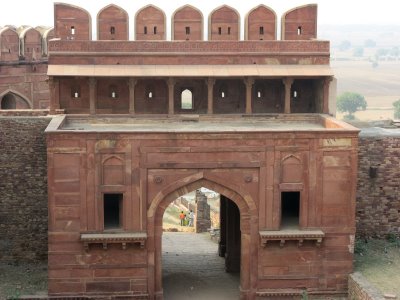Conventional geometric designs and arabesques define the sculptures during Jahangir era. Although there were a handful of monuments during this time but certain new features of Mughal sculptures and architecture evolved. For instance, for the first time the white marble was replaced by the use of red sandstone and the Pietra Dura inlay work became a recurrent characteristic.

The miniature paintings of animals and flowers are worth noticing. The architectural patterns followed during the reign of Jahangir were based on the established vocabulary of the Mughal architecture. Arched gateways, dome shaped buildings and the use of intricate inlay works are the essential features of Mughal sculptures. Jahangir`s passion for art was shared by his wife Nur Jahan. The queen, thus, assisted the emperor in his efforts of building the Shalimar-Bagh on the Dal Lake in Kashmir. She herself was a patron of painting and architecture.
The sculptural wonders during the reign of Jahangir include the Sculpture of Mausoleum of Akbar and The Tomb of Itmad ud Daulah. The tonal warmth and opulent decoration characterised the buildings built during this time. The Hindu architectural elements almost disappeared from the sculptures during Jahangir era.



















